In the world of software engineering,Telugu Archives code can take multiple forms from the time it's written by a programmer to the moment it is executed by a computer. What begins as high-level source code, written by humans in languages like Python or Java, this code eventually is eventually transformed into machine code – a sequence of 1s and 0s – that represent the lowest-level language a computer can read and execute. Often, an intermediary format called bytecode bridges the gap between high-level source code and machine code.
Machine code is the most basic and fundamental level of code, designed to be directly read and executed by a computer's hardware. It is so low-level that it is neither human-readable nor accessible to higher-level systems. Machine code consists entirely of binary sequences – 1s and 0s – that correspond to specific commands or operations, instructing the computer's components (e.g., memory, CPU) on exactly what to execute.

Editor's Note:
This guest blog was written by the staff at Pure Storage, an US-based publicly traded tech company dedicated to enterprise all-flash data storage solutions. Pure Storage keeps a very active blog, this is one of their "Purely Educational" posts that we are reprinting here with their permission.
High-level programming languages are typically translated into machine code through a process called compilation or assembly.
The primary role of machine code is to serve as the interface between software and hardware. It converts high-level programming languages (code you write in Java, C#, Python, etc.) into instructions a computer can understand and execute. Additionally, machine code forms the foundation for higher-level programming languages, as well as the compilers and interpreters used to create intermediary formats like bytecode, which will be discussed next.

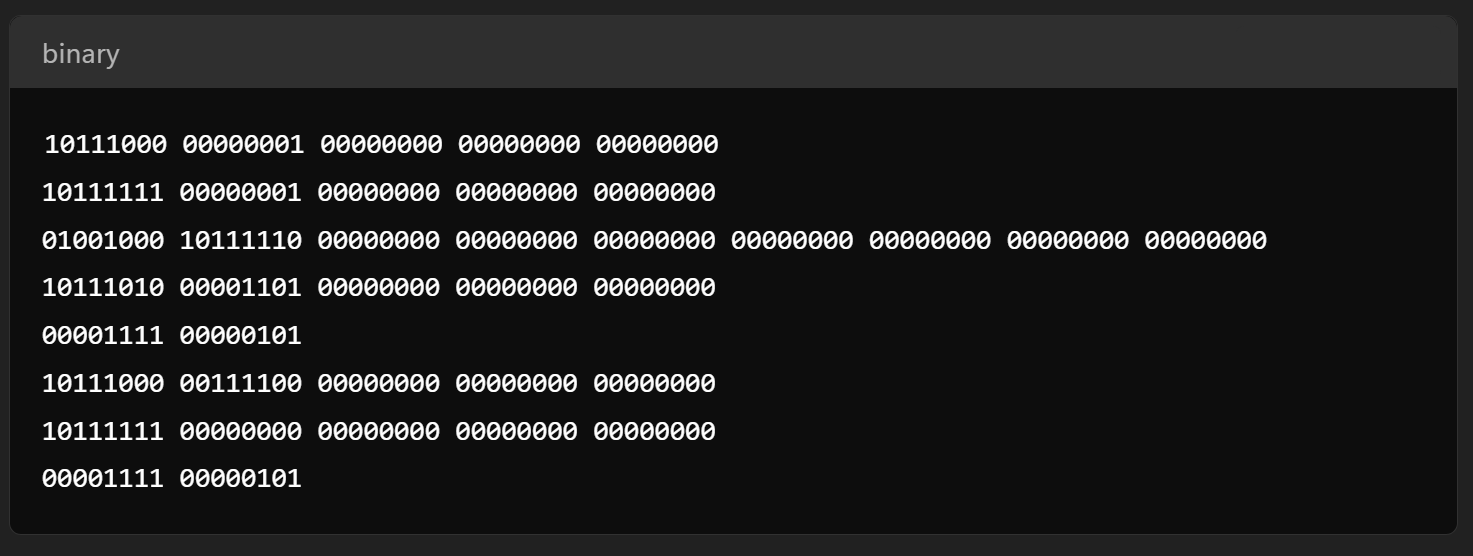
When software is written in a variety of programming languages, machine code ensures that high-level, human-readable commands are transformed into machine-readable instructions. Furthermore, machine code is optimized for the specific hardware it runs on, maximizing efficiency and performance.
Bytecode is a compact, platform-independent, and portable version of high-level code. It's akin to a middle ground between source code and machine code: It's not readable by a human programmer like source code, but it's also not readable by hardware, like machine code. Instead, a compiler within a programming environment translates the source code into bytecode, which is then executed by a virtual machine or interpreter or compiled further.
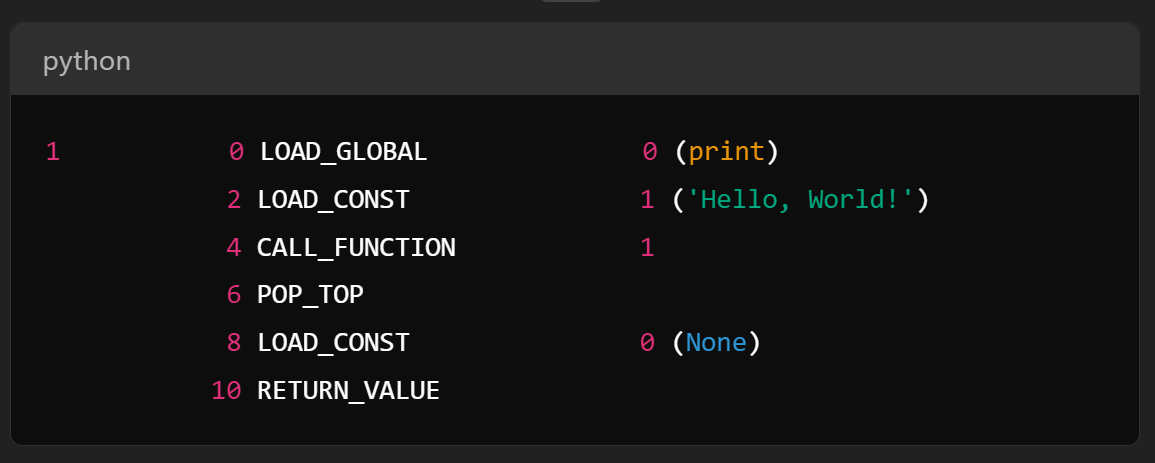
This distinction is important because modern software often needs to run on various devices, operating systems, and platforms. Bytecode enables this by providing a simplified, standardized representation of the source code in numeric form.
This format makes bytecode lightweight and portable, unlike machine code, which is often specific to a particular hardware architecture (e.g., a specific CPU). As long as a system has the appropriate virtual machine, it can execute the bytecode.
In simple terms, bytecode is a streamlined, compact version of a program written in a high-level programming language, such as Java or Python. However, it cannot be executed without a virtual machine or interpreter. Bytecode is also sometimes referred to as "p-code" (short for portable code).
Machine code is generally faster than bytecode because it is easier and quicker for a computer to process. This is primarily due to the absence of an abstraction layer, which is present in bytecode to simplify programming and compilation. While this abstraction layer makes code development more efficient for programmers, it often results in a trade-off in performance. Abstraction reduces the code's granularity and limits direct control over machine operations.
Machine code is closely aligned with the hardware's cache, memory, and other components, enabling software to be highly optimized for the specific hardware. Written in the computer's native language, machine code eliminates the need for additional interpretation. This means you are giving the machine exact instructions in the language specifically designed for it, resulting in minimal overhead and faster execution.
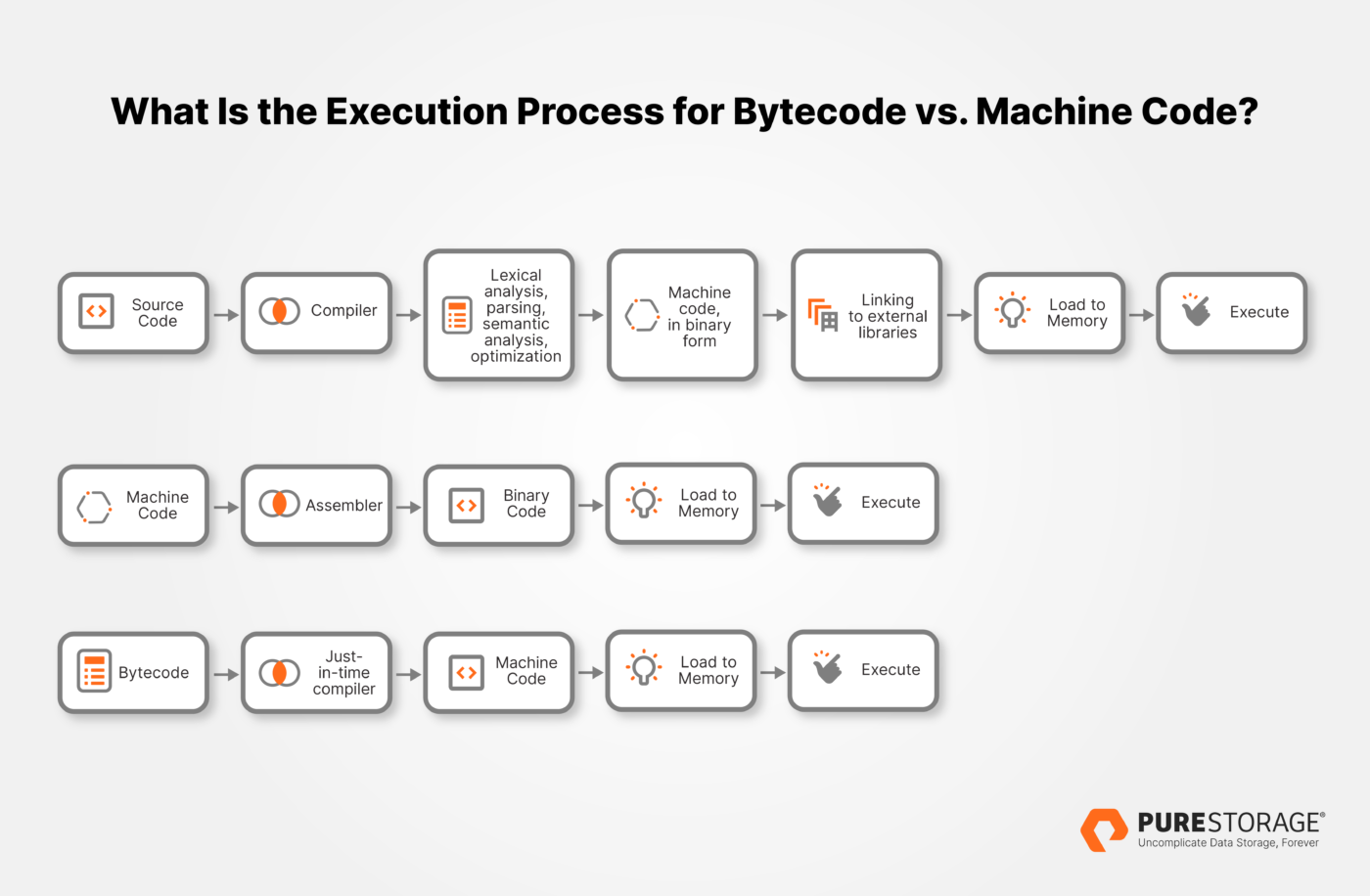
Bytecode, on the other hand, requires an additional layer of interpretation, which can introduce delays and complexity. Techniques like just-in-time (JIT) compilation can improve bytecode performance by converting it to machine code during runtime. However, machine code still benefits from superior hardware-level optimization.
A compiler that generates hardware-specific machine code can fully utilize the unique features of the hardware, whereas bytecode often cannot leverage these features as effectively.
No, binary code is not the same as bytecode. While both are written in binary format (sequences of 1s and 0s), they serve different purposes:
Yes, the Common Intermediate Language (CIL) in Microsoft's .NET framework is a form of bytecode. Like Java, .NET operates on the principle of "write once, run anywhere." A compiler translates source code written in .NET languages into CIL instructions. These instructions can then be executed on any system with a compatible Common Language Runtime (CLR).
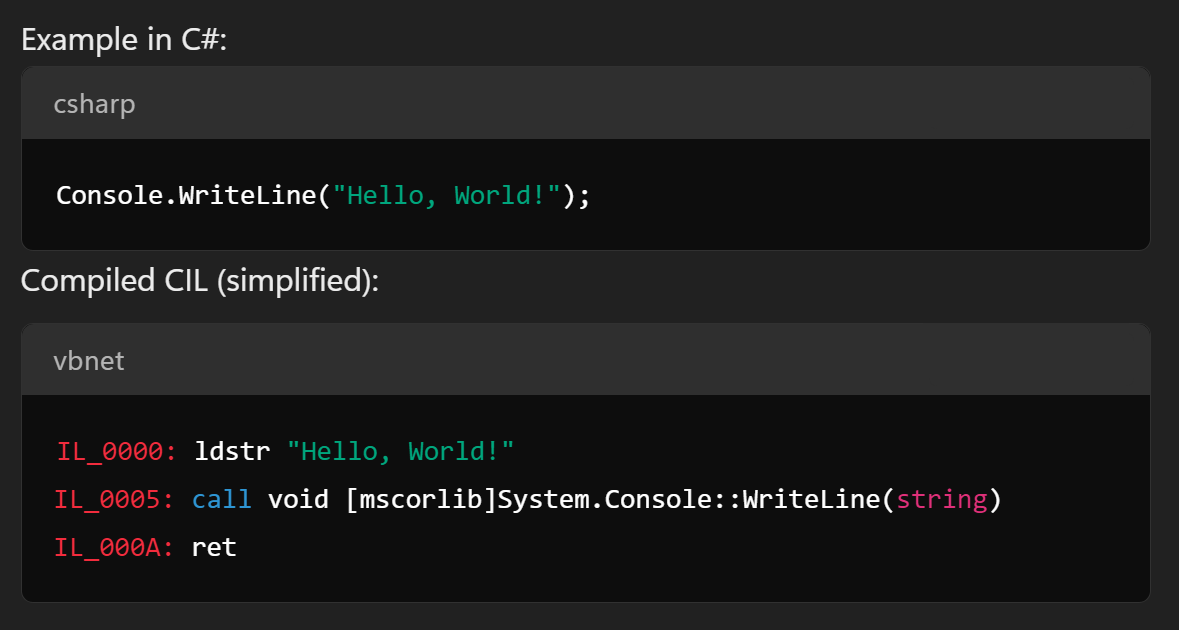
Java is one of the most portable modern programming languages and bytecode is a cornerstone of this characteristic. When a Java application is compiled, the compiler generates bytecode instead of machine code.
When a Java application is written, it gets compiled and generates bytecode, which provides instructions to the JVM, which acts as an interpreter for each method in the Java program. The machine code it generates can be efficiently executed by the CPU.
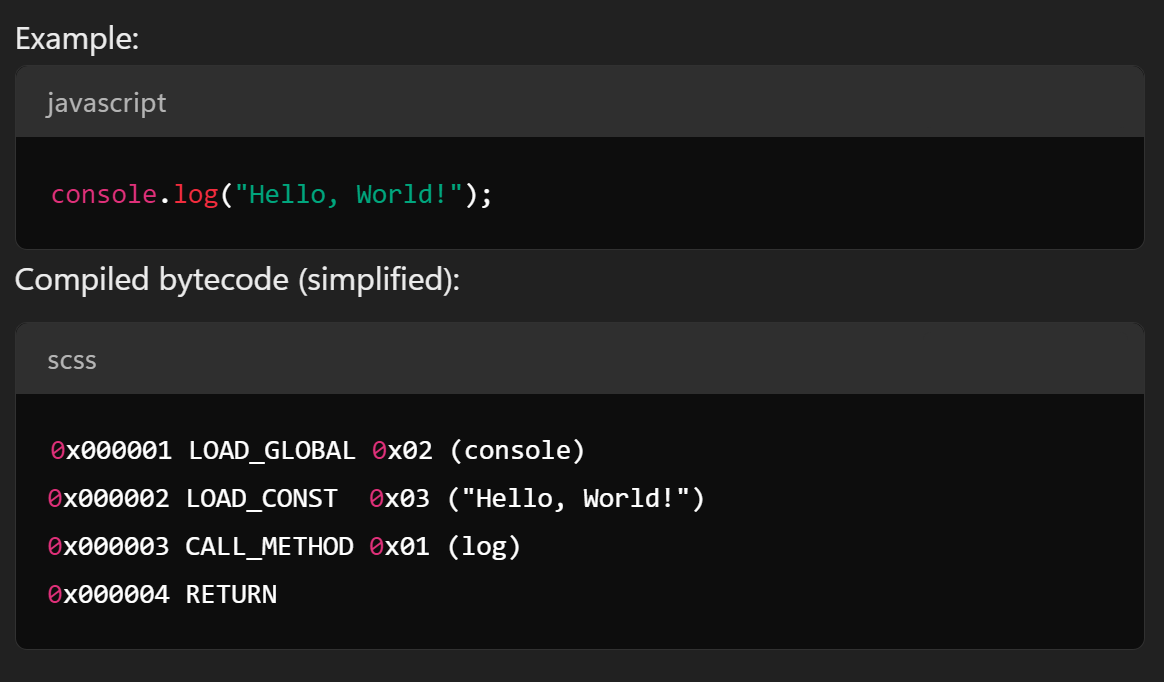
Just-in-time compilers can help developers get the best of both worlds: the portability of high-level programming compiled into bytecode with the efficiency of machine code and better optimization of machine-specific features.
Previous:Mary Shows Up
 Philips now allows customers to 3D print replacement parts
Philips now allows customers to 3D print replacement parts
 No one has taken responsibility for the radioactive plume over Europe
No one has taken responsibility for the radioactive plume over Europe
 Someone made a Lena Dunham Twitter bot that generates apologies
Someone made a Lena Dunham Twitter bot that generates apologies
 'Doom' mod for the original 1993 game adds loot boxes
'Doom' mod for the original 1993 game adds loot boxes
 NYT mini crossword answers for May 9, 2025
NYT mini crossword answers for May 9, 2025
 Here lies quite possibly the most unfortunate statue you'll see
Here lies quite possibly the most unfortunate statue you'll see
 Samsung's flexible Galaxy X could launch in January 2018, report says
Samsung's flexible Galaxy X could launch in January 2018, report says
 Angry soccer player celebrates goal by giving teammate the finger
Angry soccer player celebrates goal by giving teammate the finger
 An unknown quiz app called FriendO is going viral with teens
An unknown quiz app called FriendO is going viral with teens
 Best Sony headphones deal: Over $100 off Sony XM5 headphones
Best Sony headphones deal: Over $100 off Sony XM5 headphones
 Google Lens is now rolling out to Assistant on Pixel phones
Google Lens is now rolling out to Assistant on Pixel phones
 This may be the most spectacular car parking fail of all time
This may be the most spectacular car parking fail of all time
 Samsung's flexible Galaxy X could launch in January 2018, report says
Samsung's flexible Galaxy X could launch in January 2018, report says
 NYT mini crossword answers for May 9, 2025
NYT mini crossword answers for May 9, 2025
 Uber leaked info on 57 million people—then tried to cover it up
Uber leaked info on 57 million people—then tried to cover it up
 Several NBA teams are officially on board for 'League of Legends' franchises
Several NBA teams are officially on board for 'League of Legends' franchises
 Bitcoin could soon attract billions of dollars from institutional investors
Bitcoin could soon attract billions of dollars from institutional investors
 Every MCU movie villain ranked, from "Iron Man" to "Thunderbolts*"
Every MCU movie villain ranked, from "Iron Man" to "Thunderbolts*"
 Ford shows off new hybrid police cars that can go 21 mph on electricity alone
Ford shows off new hybrid police cars that can go 21 mph on electricity alone
NYT Connections hints and answers for June 6: Tips to solve 'Connections' #726.Hear That Lonesome Gasket Blow: Part 1 by Evan JamesAll the Difference by Sadie SteinOn This Day by Sadie SteinAmerica in Love, and Other News by Sadie SteinHappy Birthday, Abraham Lincoln by Sadie SteinHypothetical Books, and Other News by Sadie SteinVirginia Woolf, on Pancakes and Porridge by Sadie SteinLuljeta Lleshanaku, Kruja, Albania by Matteo PericoliWhat We’re Loving: Ham Biscuits, Victoriana by Sadie SteinOn This Day by Sadie SteinVirginia Woolf, on Pancakes and Porridge by Sadie SteinNYT Strands hints, answers for June 6Cake and Pie, and Other News by Sadie SteinDidactic Seuss, and Other News by Sadie SteinWhat We’re Loving: Ham Biscuits, Victoriana by Sadie SteinB is for Bookseller by Sadie SteinWhat to Read on a Stormy Weekend by Sadie SteinWhat to Read on a Stormy Weekend by Sadie SteinNYT Connections hints and answers for June 6: Tips to solve 'Connections' #726. NASA craft snaps extraordinarily close images of volcano Costa Rica vs. Paraguay 2024 livestream: Watch Copa America for free NetEase unveils new martial arts RPG Sword Heart Dragon Carver · TechNode Brazil vs. Colombia 2024 livestream: Watch Copa America for free Former Microsoft and Alibaba veteran Hu Yunhua joins Zhipu AI as head of ChatGLM · TechNode Proton Drive: It's like Google Docs, but with end Japan's SLIM moon lander snaps eerie photo — and it could be its last Saturn's 'Death Star' moon has been keeping a big secret Google Pixel 9 video leak: Check out the new bright pink model China announces mutual recognition of self NASA flies extremely close by volcano world, captures wild footage Scientists find planet with a tail 150 times longer than the Mississippi Before its demise, NASA's Mars helicopter captured glorious aerial view Romania vs. Netherlands 2024 livestream: Watch Euro 2024 for free Scientists found an enigma in deep space. The Webb telescope solved it. NASA just spotted an exploded star blasting vital elements into space Chinese car maker GAC to use humanoid robots powered by solid NYT's The Mini crossword answers for July 3 NASA can finally touch the 'rarest' rocks on Earth Astronomers discover cyclones ravage this exoplanet
2.2303s , 10179.265625 kb
Copyright © 2025 Powered by 【Telugu Archives】,Miracle Information Network